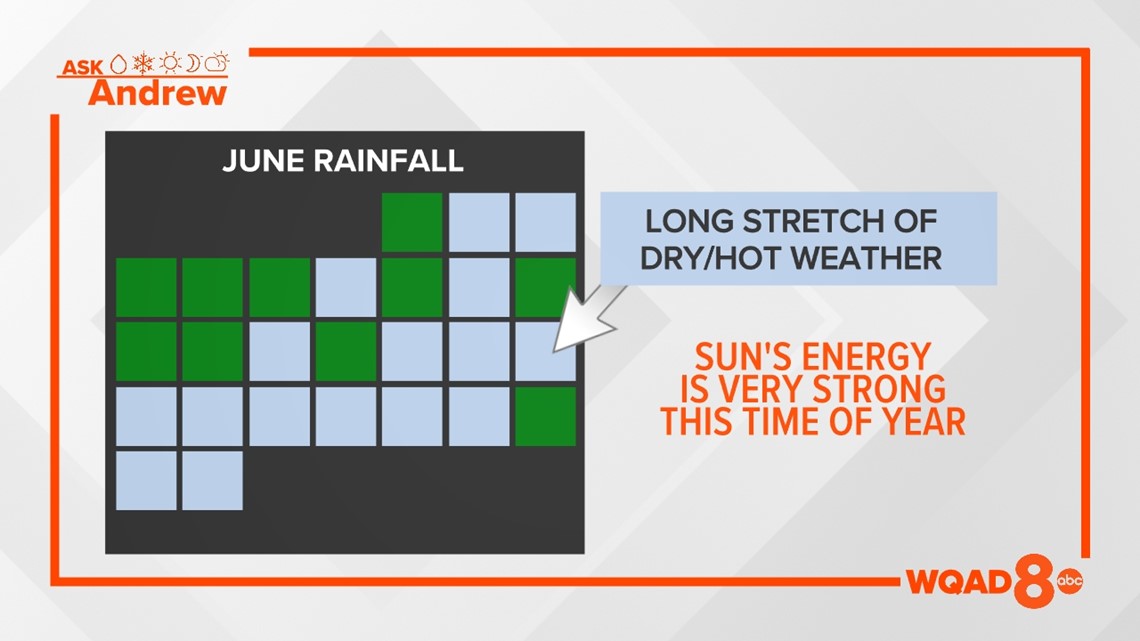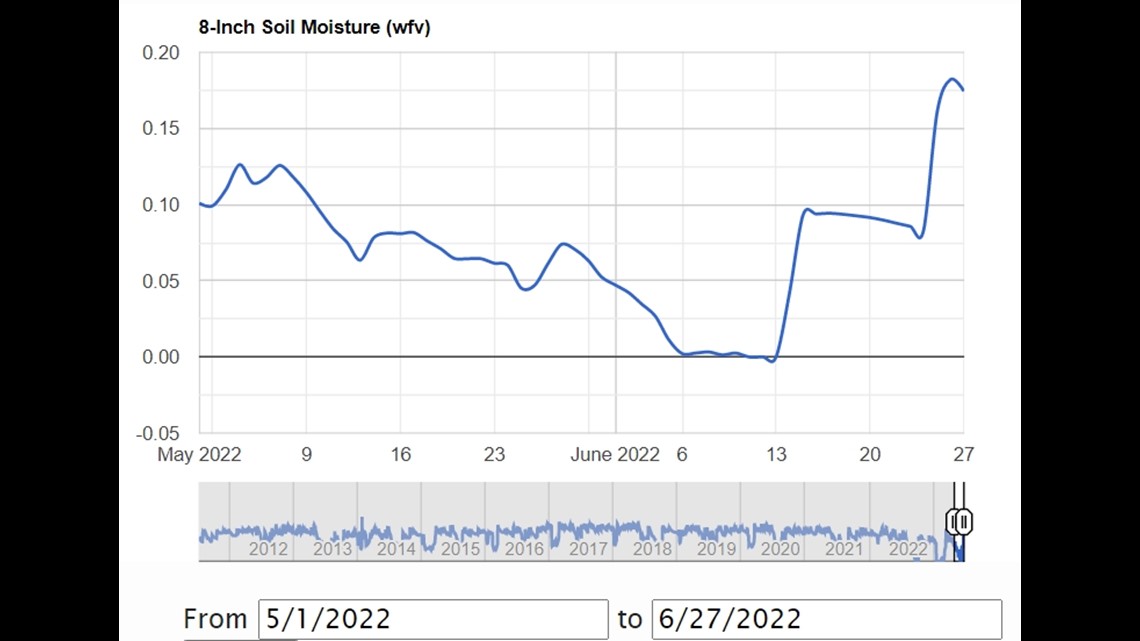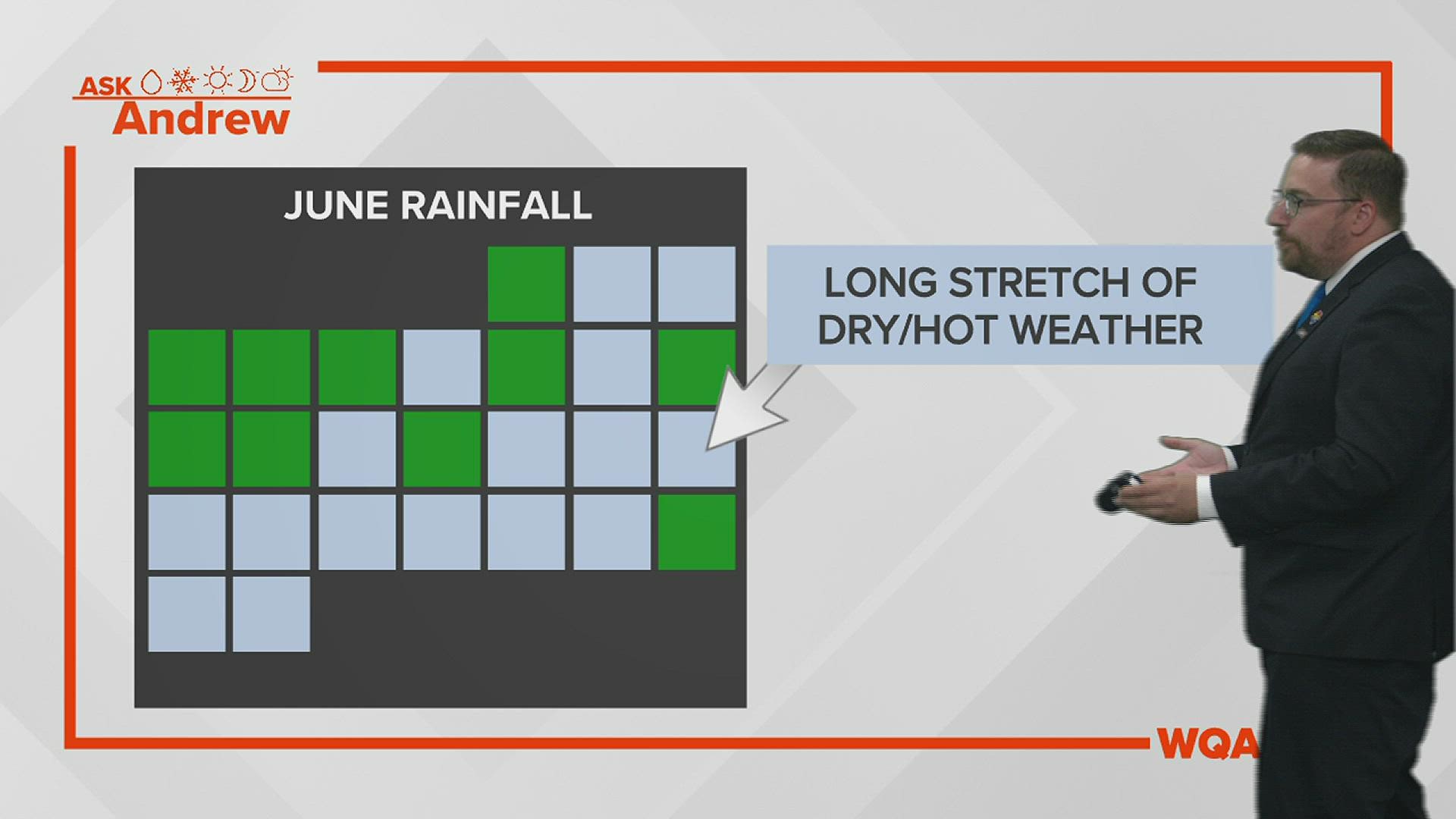MOLINE, Ill. — You've likely heard us use the term flash flood when describing rapidly rising water, whether it be from a creek, stream or major river. What about a flash drought?
Some of our hometowns are starting to experience flash droughts right now. What makes this type of drought different, and how does it develop? Let's dive in!
Flash floods and droughts are similar in that they form very quickly. Flash drought is defined as the rapid onset or intensification of drought caused by a lack of precipitation, abnormally high temperatures, stronger winds and higher levels of energy from the sun. Together, all of these changes can rapidly impact a region and set the stage for a potentially longer-term drought.
A flash drought can also be tied to longer-term climate patterns, such as La Nina, and usually occurs during the summer season in the U.S.


If you take an overview of the rainfall pattern for the month of June, it's easy to see where parts of our area got into a bit of trouble. For the first half of the month, rainfall had been fairly steady and plentiful with several events leading to at least a quarter of an inch of the liquid gold.
By the time we reached June 16, rainfall really began to become more scarce. Add a heat wave on top of this, and drought conditions quickly returned to our region.


Data from the Illinois State Water Survey keeps track of soil moisture, and as you can see from the chart above, that moisture was severely lacking heading into the middle of June.
Thankfully most recently, we've received a few rounds of beneficial rainfall that have helped us recover some. Still, the longer-range outlook favors below-normal precipitation amounts through the month of August, meaning drought conditions are likely to persist at times across the region.
Have a question that you would like me to answer for an upcoming "Ask Andrew" segment? Click here to submit it.

